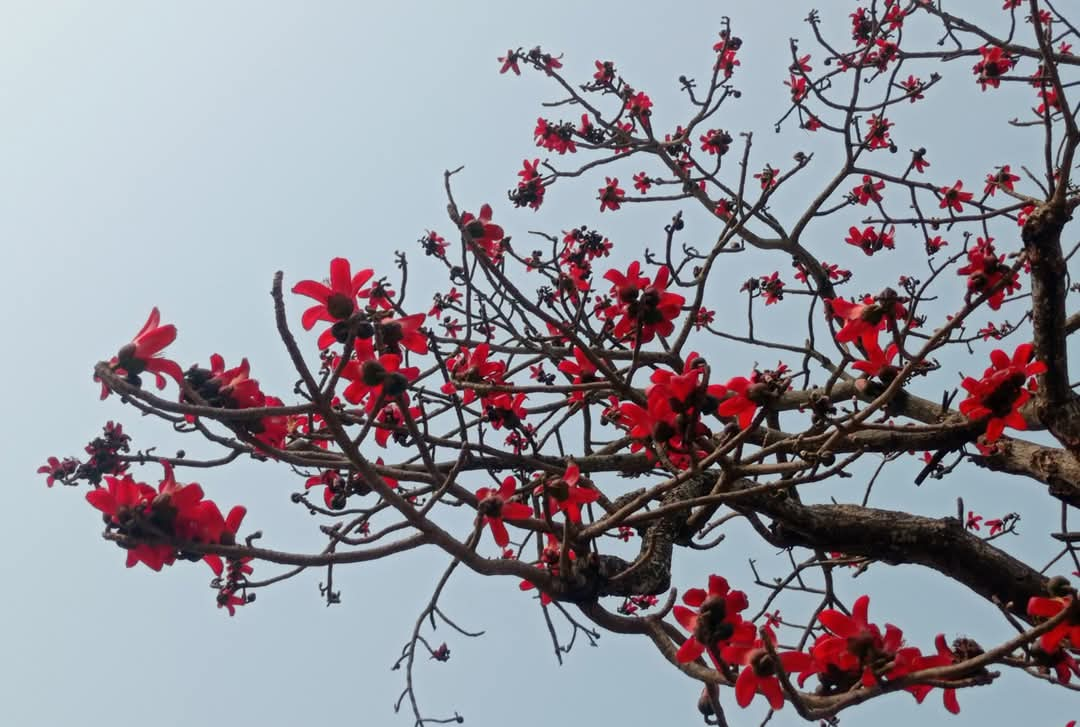Sunsari's Inaruwa Municipality-4 is currently adorned with the vibrant red blossoms of the Simal (silk cotton tree) lining the East-West Highway. The striking blooms, signaling the arrival of spring, have turned the roadside into a natural spectacle, captivating passersby and nature enthusiasts alike.
The Simal tree, scientifically known as Bombax ceiba, is a significant part of Nepal's ecological and cultural heritage. Known for its vivid red flowers, the tree plays a crucial role in supporting biodiversity, providing food and habitat for birds, bees, and other wildlife.
This seasonal bloom not only enhances the aesthetic beauty of the area but also underscores the importance of preserving indigenous flora. As highways often witness extensive human activity and deforestation, these flowering trees stand as a testament to the coexistence of development and nature.
Local residents and travelers have been pausing to admire and photograph the blossoming trees, turning this stretch of the highway into a picturesque attraction. However, environmentalists emphasize the need for conservation efforts to ensure that such natural wonders continue to thrive for generations to come.
This spectacle is a reminder of nature's resilience and the delicate balance required to maintain our environment amidst rapid urbanization.